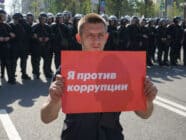Yemen, Somalia, and Pakistan are countries where silent and almost unknown war activities are conducted. There are no humans on the ground and no traditional piloting of aircrafts or tanks. Instead U.S. Army drones, or remote-controlled unmanned airplanes, run bombing missions in these countries. The use of drones by the CIA to bomb military targets in scenarios where war is not officially declared, originally began during the Bush era but has increased during the Obama administration. Despite the increase in frequency, drone campaigns generally occur with little public awareness, due in part to a lack of appropriate coverage from media outlets. “If you noticed a drone strike in the news”, says Jan Steadmand on Wired.co.uk, “chances are the only name that accompanies it will be the name of the target and if they’re now believed to be alive or dead.” But full transparency on the very results, including casualty numbers and identities, often remain “unreported and unclear.”
To investigate the details of Pentagon and CIA drone attacks in Pakistan, The Bureau Of Investigative Journalism (BIJ) recently launched their “Naming the Dead” project to document their investigation on civilians killed in drone strikes. According to BIJ, there have been 2629 deaths in Pakistan due to American drone strikes: of those, only 213 were identified as militants, while 331 were identified as civilians (87 were children). According to Chris Woods of BIJ, “our aim will be to identify by name many hundreds more of those killed. A significant number of those identities will be known by local communities, by U.S. and Pakistani officials, and by militant groups. We hope to convince them to share that information.” To begin the project, BIJ is raising money to fund “Naming the Dead”: according to the Bureau Drone Team, substantial support was provided by and UK foundation but the project still needs more funds. The American Freedom of the Press Foundation is also supporting the project by launching a crowd-funding effort to attract additional funding.
Ultimately the project hopes to provide more transparency to this controversial military procedure, which is becoming more and more central in contemporary war activities. BIJ also wants to show both sides of a drone attack, which are often celebrated in the press for their effectiveness when successful in killing Al Qaeda affiliates, but are largely uncovered when victims are civilians. “By showing only one side of the coin, we risk presenting a distorted picture of this new form of warfare. There is an obligation to identify all of those killed – not just the bad guys,” explains Chris Woods. Last year, the Bureau and The Sunday Times reported about a particular drone strike, which left 50 civilians dead on the ground in Pakistan, with more victims added as people were shot while trying to rescue casualties from an earlier drone bombing. The CIA called the information into question and accused BIJ of “helping Al Qaeda succeed,” the New York Times reports.
Read more about drones here.
Photo credits: RG1033 / Flickr CC
Tags: Barack Obama, Bureau of Investigative Journalism, CIA, drones, Freedom of the Press Foundation, Naming the Dead, Pakistan, Pentagon, Press freedom, War Reporting, Wikileaks













































